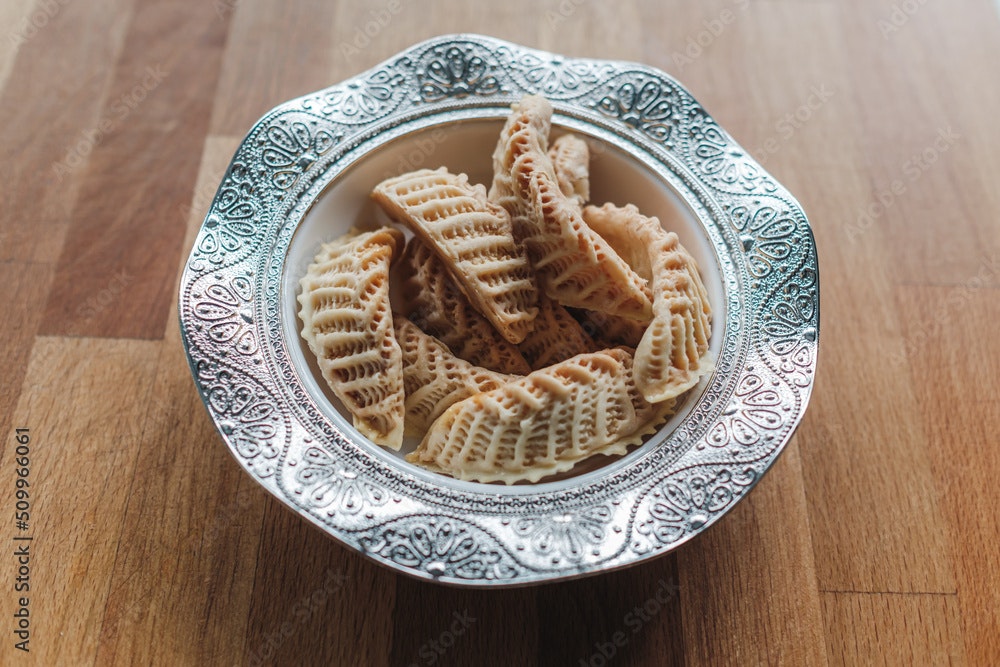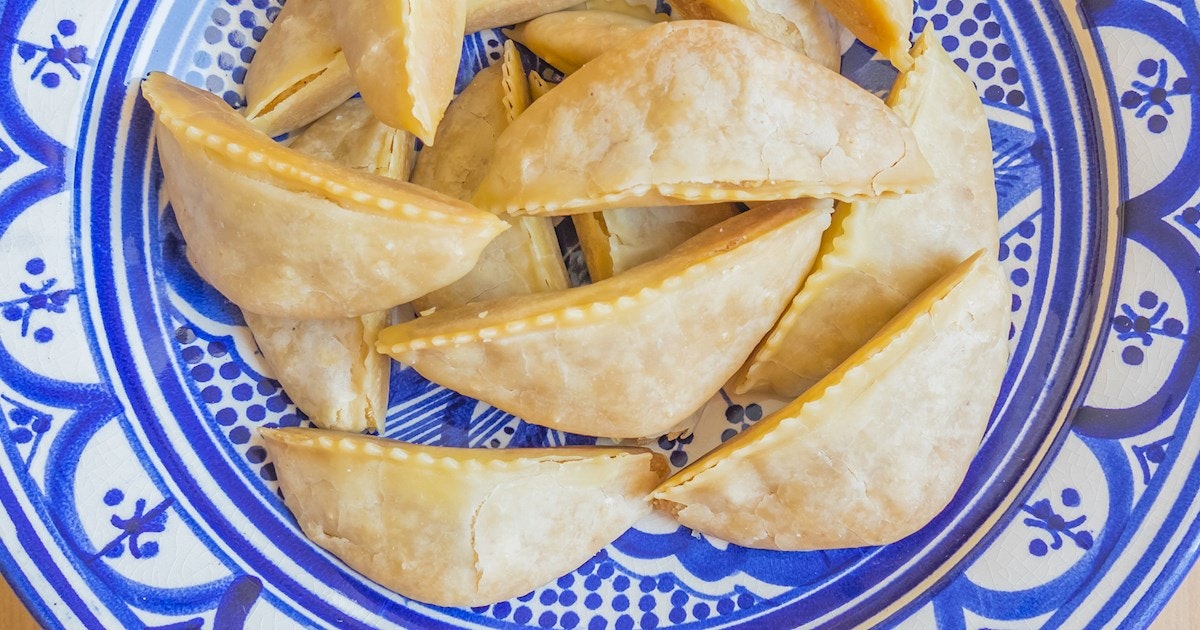Kaab el Ghazal

Moroccan Kaab el Ghazal, also known as Gazelle Horns, is a traditional pastry that holds a special place in Moroccan cuisine. These delicate, crescent-shaped cookies are filled with almond paste and flavored with orange blossom water, creating a subtle yet delightful treat. Often served during festive occasions and celebrations, Kaab el Ghazal is cherished for its elegance and exquisite taste.
What Makes Kaab el Ghazal Special?
Delicate and Elegant
Kaab el Ghazal is renowned for its delicate, crescent shape that resembles a gazelle’s horn. The thin, tender pastry encases a rich, fragrant almond paste, making it a visually appealing and sophisticated treat.
Fragrant and Flavorful
The filling of Kaab el Ghazal is made from ground almonds, sugar, and orange blossom water, creating a fragrant and subtly sweet flavor. The use of orange blossom water gives the pastry a distinct and memorable aroma, enhancing the overall experience.
History of Kaab el Ghazal

Culinary Heritage
Kaab el Ghazal has its roots in Morocco's rich culinary heritage, with influences from both Arab and Berber traditions. This pastry has been a part of Moroccan cuisine for centuries, evolving with regional variations and unique touches.
Cultural Significance
In Moroccan culture, Kaab el Ghazal is a symbol of celebration and refinement. It is often prepared for weddings, religious holidays, and special family gatherings. Serving Kaab el Ghazal to guests is a gesture of hospitality and care, reflecting the importance of sharing and community in Moroccan social life.
How Moroccans Make Kaab el Ghazal
Traditional Preparation
Making traditional Moroccan Kaab el Ghazal involves several key steps:
- Preparing the Almond Paste: The filling is made by blanching and grinding almonds, then mixing them with sugar, cinnamon, and orange blossom water to form a smooth paste.
- Preparing the Dough: The dough is made from flour, butter, and a pinch of salt, mixed with water to create a smooth and elastic consistency.
- Shaping the Pastries: The dough is rolled out into thin sheets. Small portions of almond paste are placed on the dough, which is then folded and shaped into crescent moons, resembling gazelle horns.
- Baking: The shaped pastries are baked in a preheated oven until they are lightly golden. Once baked, they are often dusted with powdered sugar for an extra touch of sweetness.
Serving Tradition
Kaab el Ghazal is typically served with Moroccan mint tea, making it a perfect accompaniment for a traditional tea ceremony. Its elegant appearance and delightful flavor make it a favorite at Moroccan tea tables and a must-try for visitors.